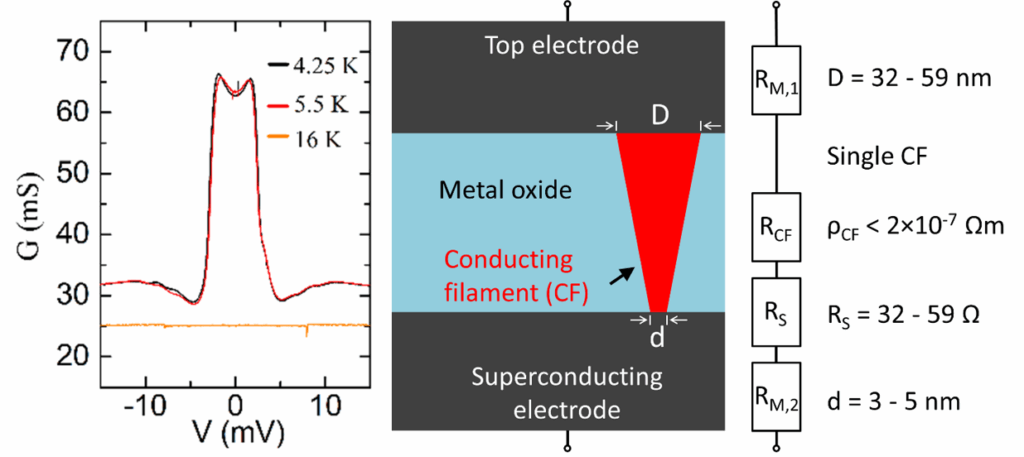A thin TiO2 semiconductor layer embedded between two metal electrodes is known to work as a memory cell, the famous memristor. To work as a memristor, the structure is formed by soft breakdown which creates a conducting nano-filament penetrating through the poorly conducting TiO2 and connecting the electrodes conductively. Previous works determined the number of the nano-filaments in the device and nano-filament properties (shape, composition, resistance) destructively by transmission electron microscopy. Here we obtain a similar information non-destructively by electrical measurements. While in a conventional memristor both electrodes are made of the normal metal, we study the metal/TiO2/metal memristors with the bottom electrode made of the superconducting NbN layer and top electrode made of the normal (Pt) or superconducting (Nb) metal. The nano-filament formed in the TiO2 layer connects the electrodes and touches the bottom electrode as a point contact, thus allowing to perform the point-contact Andreev-reflection spectroscopy of the NbN superconductor. The spectra, measured below the critical temperature of NbN, are analyzed using the Blonder-Tinkham-Klapwijk theory. The analysis reveals one active conically-shaped nano-filament composed of titanium. It also determines the nano-filament resistance, the Sharvin resistance of the point contact, and the Maxwell resistances of the electrodes.

More information can be found in our recent work published in Journal of Applied Physics:
Observation and characterization of titanium-like nano-filament in TiO2 memristor using superconducting electrode(s) and Andreev spectroscopy
Martin Moško ; Mária Koscelanská; Antónia Mošková ; Marek Vidiš ; Serhii Volkov; Maroš Gregor ; Magdaléna Poláčková ; Tomáš Roch ; Branislav Grančič ; Leonid Satrapinskyy ; Peter Kúš ; Andrej Plecenik ; Tomáš Plecenik





